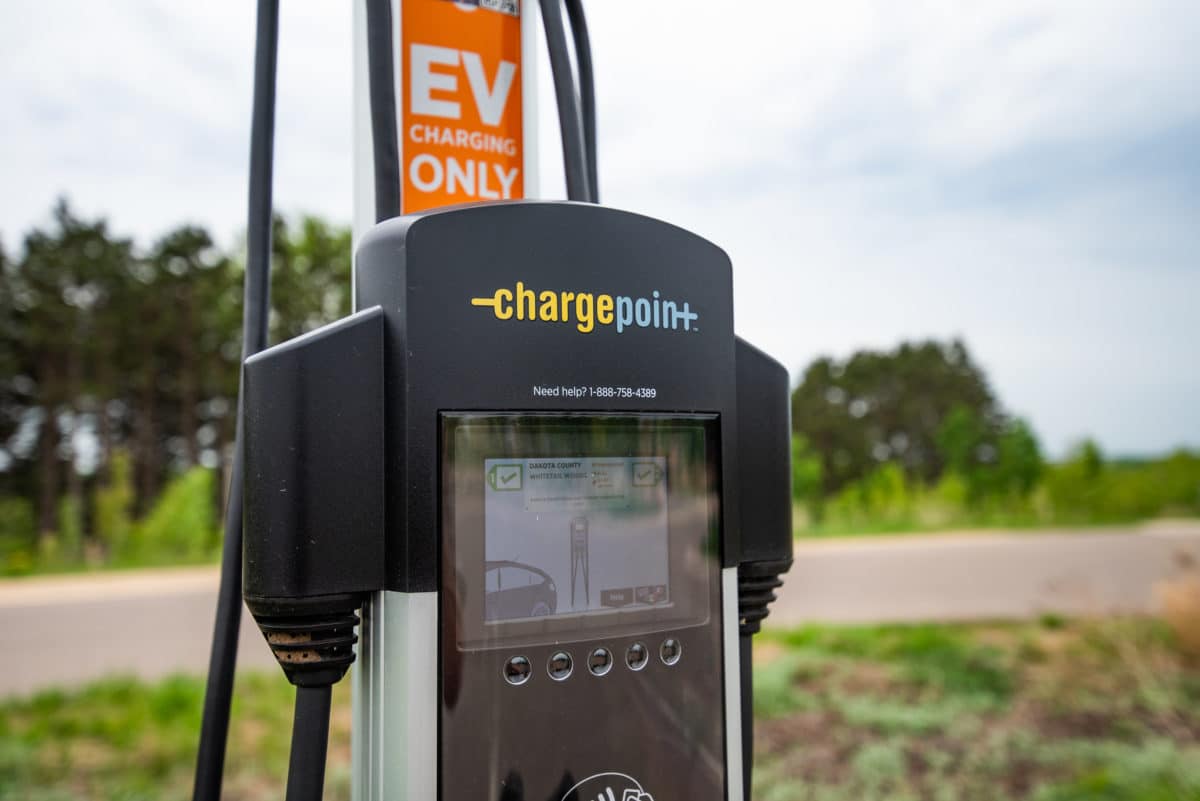From pv magazine USA
A research team from Oregon State studied the potential of agricultural land to generate solar electricity to power electric vehicles along the state’s highways. They found that agrivoltaic systems placed in adjacent proximity to the highway can be useful in rural areas, which is also where electric charging stations are most needed.
The study, recently published in Scientific Reports, looked at how agrivoltaic technology can be used to improve EV charging infrastructure to reduce range anxiety, which is the worry about making it to the next charging point. In their analysis, the team envisioned a scenario that had the highest traffic demand and the lowest photovoltaic generation, and the results showed that agrivoltaics could play a role in charging station infrastructure development.
In the study, a total of 231 rural highway access points were identified that had sufficient land area to service EV charging stations with energy generated by agrivoltaic installations. These areas are indicated with black circles Figure 1.

Popular content
The team discovered that to meet the conservative estimate of EV charging station demand at 86% of highway access points through Oregon, 12,000 acres (18.75 square miles) of land would be required. Of the 231 highway access points identified for agrivoltaics, 220 (95%) have a distance between them that is less than 17 miles. The researchers looked at earlier research conducted in Croatia that indicated that people have less range anxiety if charging stations are less than 3.1 miles apart. And other research shows that gas stations tend to be 2.5 to 18 miles apart. The Oregon State team used this range as a basis in their scenario.
Based on the number of vehicles registered in the state of Oregon and how much carbon they emit each year, the team estimated that the potential for carbon reduction through agrivoltaic-powered EV charging stations is about 3.1 million tons or the equivalent to 673,915 vehicles removed from the road each year, if their approach were fully implemented.
Overall the Oregon researchers showed that servicing rural EV charging stations with agrivoltaics next to the highway is feasible, requiring only 3% of total land supply to power 86% of rural highway access points throughout the state.
As rural areas often lack the grid infrastructure to support charging stations, agrivoltaics enable the shift in energy production to the point of use. Oregon currently has 670 EV charging stations, and the researchers’ scenario adds another 231 charge points located in close enough proximity to reduce or eliminate range anxiety. Additionally, the team estimates that implementation of this approach could reduce annual carbon emissions from passenger vehicle use in Oregon by 21%.
This content is protected by copyright and may not be reused. If you want to cooperate with us and would like to reuse some of our content, please contact: editors@pv-magazine.com.



By submitting this form you agree to pv magazine using your data for the purposes of publishing your comment.
Your personal data will only be disclosed or otherwise transmitted to third parties for the purposes of spam filtering or if this is necessary for technical maintenance of the website. Any other transfer to third parties will not take place unless this is justified on the basis of applicable data protection regulations or if pv magazine is legally obliged to do so.
You may revoke this consent at any time with effect for the future, in which case your personal data will be deleted immediately. Otherwise, your data will be deleted if pv magazine has processed your request or the purpose of data storage is fulfilled.
Further information on data privacy can be found in our Data Protection Policy.